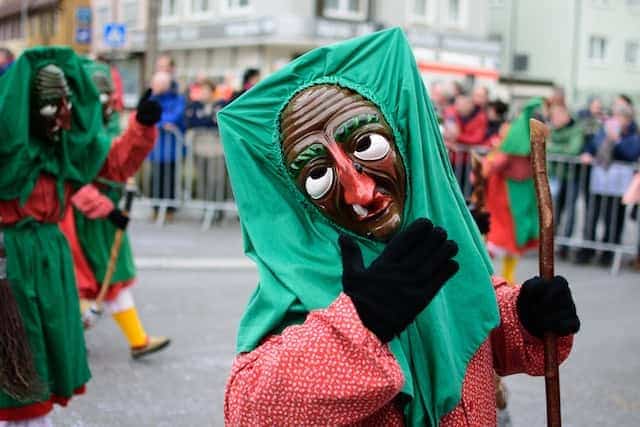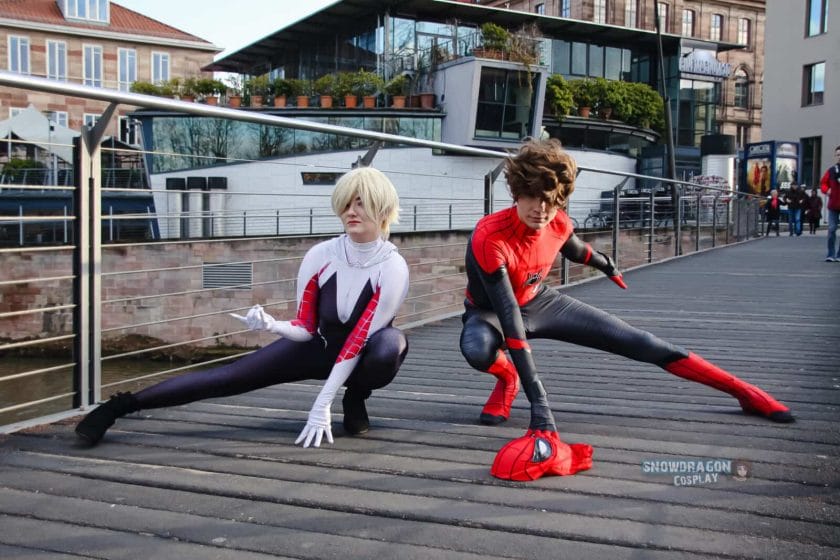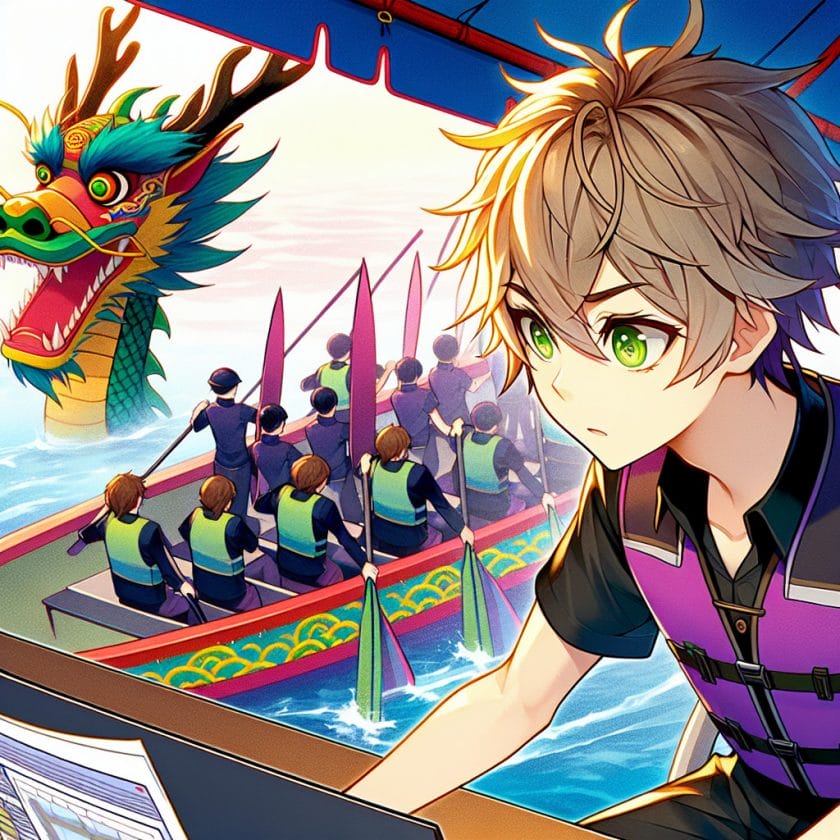https://www.youtube.com/watch?v=Zfiy1SBXsj4&pp=ygUPa2F3YWlpIGNsb3RoaW5n
[publishpress_authors_box layout="ppma_boxes_840322"]
https://images-wixmp-ed30a86b8c4ca887773594c2.wixmp.com/f/68fe53a4-f861-4f0b-8ab7-5d379570783b/dg6ej13-f7732705-d6ad-4c42-aab2-1a44d6591a90.jpg?token=eyJ0eXAiOiJKV1QiLCJhbGciOiJIUzI1NiJ9.eyJzdWIiOiJ1cm46YXBwOjdlMGQxODg5ODIyNjQzNzNhNWYwZDQxNWVhMGQyNmUwIiwiaXNzIjoidXJuOmFwcDo3ZTBkMTg4OTgyMjY0MzczYTVmMGQ0MTVlYTBkMjZlMCIsIm9iaiI6W1t7InBhdGgiOiJcL2ZcLzY4ZmU1M2E0LWY4NjEtNGYwYi04YWI3LTVkMzc5NTcwNzgzYlwvZGc2ZWoxMy1mNzczMjcwNS1kNmFkLTRjNDItYWFiMi0xYTQ0ZDY1OTFhOTAuanBnIn1dXSwiYXVkIjpbInVybjpzZXJ2aWNlOmZpbGUuZG93bmxvYWQiXX0.RfUfFBON8nQZBQn9vDVfnVmzoPy6-qETqoJQ3RTfIiw
1. The Emergence of Kawaii Clothing: A Trend That Transcends Time
The emergence of kawaii clothing can be traced back to the post-World War II era in Japan. In a time of recovery and rebuilding, the concept of “kawaii” (meaning cute or adorable) became a source of comfort and escapism for many Japanese people. This led to the rise of kawaii fashion, which incorporated bright colors, playful patterns, and whimsical designs.
Over the years, kawaii clothing has evolved and adapted to reflect changing societal trends and influences. It has become more than just a fashion statement – it is now a cultural phenomenon that transcends age, gender, and borders. From its humble beginnings in Japan, kawaii clothing has gained international recognition and has become synonymous with Japanese pop culture.
The Influence of Anime and Manga
Anime and manga have played a significant role in popularizing kawaii fashion around the world. These forms of entertainment often feature characters dressed in cute and quirky outfits, inspiring fans to incorporate elements of kawaii fashion into their own wardrobes. Cosplay, which involves dressing up as characters from anime or manga, has also contributed to the spread of kawaii fashion beyond Japan.
Kawaii as a Lifestyle
For many people, embracing kawaii fashion goes beyond simply wearing cute clothes – it becomes a way of life. The kawaii aesthetic extends to home decor, accessories, stationary, and even food. Kawaii enthusiasts strive to surround themselves with all things adorable and find joy in expressing their individuality through their personal style.
2. Defining Kawaii Fashion: What Makes a Piece of Clothing Truly “Kawaii”?
Defining what makes a piece of clothing truly “kawaii” can be subjective, as it often depends on personal preferences and cultural context. However, there are some common characteristics that are often associated with kawaii fashion.
Bright Colors and Playful Patterns
Kawaii fashion is known for its use of vibrant and eye-catching colors. Pastel shades, such as baby pink, mint green, and lavender, are particularly popular. Playful patterns like polka dots, stripes, and cute animal motifs are also commonly found in kawaii clothing.
Emphasis on Cuteness
Cuteness is at the core of kawaii fashion. This can be achieved through the use of oversized bows, ruffles, lace trims, and frilly details. Clothing items may feature adorable characters or objects like kittens, teddy bears, or cupcakes.
Mixing and Matching Styles
Kawaii fashion encourages creativity and individuality by allowing for the mixing and matching of different styles. It is not uncommon to see elements of Lolita fashion combined with streetwear or traditional Japanese garments paired with modern accessories.
Inclusivity
Kawaii fashion embraces inclusivity by breaking traditional gender norms and offering options for people of all body types. It celebrates self-expression and encourages individuals to embrace their unique style without judgment.
3. Evolution of Kawaii Fashion: From Cute to Cutting-Edge
The Origins of Kawaii Fashion
Kawaii fashion originated in Japan during the 1970s and was heavily influenced by the country’s pop culture, particularly manga and anime. The term “kawaii” translates to “cute” or “adorable” in Japanese, and this aesthetic quickly became popular among young people who embraced a more playful and childlike style. Initially, kawaii fashion consisted of pastel colors, oversized bows, and cute animal motifs.
The Transformation into Cutting-Edge Fashion
Over time, kawaii fashion has evolved from its roots as a cute and innocent style into a more cutting-edge and avant-garde form of self-expression. Today, there are various subgenres within kawaii fashion that cater to different tastes and preferences. These include styles like gothic lolita, which combines elements of Victorian clothing with dark and edgy accessories, as well as decora, which is characterized by its vibrant colors and excessive use of accessories.
The Influence of Street Style
One significant factor in the evolution of kawaii fashion is the influence of street style. Japanese street fashion has always been known for its boldness and creativity, with Harajuku being a hub for unique fashion trends. Kawaii fashion has been greatly influenced by these street styles, incorporating elements such as layering, mixing patterns, and unconventional silhouettes.
The Rise of Kawaii Fashion Brands
Another contributing factor to the evolution of kawaii fashion is the emergence of dedicated brands that specialize in creating kawaii clothing. These brands have helped popularize the style both in Japan and internationally through their unique designs that cater to different subcultures within kawaii fashion. Additionally, collaborations between high-end designers and kawaii brands have further elevated the status of kawaii fashion, making it more accessible and acceptable in mainstream fashion.
Overall, the evolution of kawaii fashion has seen it transition from a cute and innocent style to a cutting-edge and diverse form of self-expression. Through the influence of street style and the rise of dedicated brands, kawaii fashion continues to push boundaries and captivate fashion enthusiasts worldwide.
4. Celebrating Designers Who Embrace the Kawaii Aesthetic
Kenzo Takada is a renowned Japanese-French fashion designer who rose to prominence in the 1970s. Known for his vibrant prints and bold designs, Takada has successfully incorporated elements of kawaii into his high-end fashion collections. His use of bright colors, playful patterns, and whimsical detailing adds a touch of cuteness to his designs while maintaining a sophisticated aesthetic.
Yohji Yamamoto: Deconstructing Kawaii
Yohji Yamamoto is a Japanese fashion designer known for his avant-garde approach to clothing design. While not traditionally associated with kawaii fashion, Yamamoto’s deconstructed silhouettes and asymmetrical cuts often challenge conventional notions of beauty and embrace an unconventional charm that aligns with the spirit of kawaii. His ability to blend elements of minimalism with unexpected details creates a unique interpretation of kawaii that appeals to those seeking a more edgy and artistic expression.
Collaborations with Kawaii Brands
In recent years, there have been various collaborations between established high-fashion designers and kawaii brands. These collaborations aim to bridge the gap between luxury fashion and kawaii aesthetics by infusing high-quality craftsmanship with cute motifs. For example, Moschino collaborated with Sanrio, the creator of Hello Kitty, to create a collection that combined Moschino’s high-fashion sensibilities with the iconic cuteness of Hello Kitty.
Emerging Kawaii Fashion Designers
Alongside established designers, there is a growing number of emerging fashion designers who are embracing the kawaii aesthetic. These designers often bring fresh perspectives and innovative ideas to the world of kawaii fashion. By experimenting with unconventional materials, unique silhouettes, and bold color combinations, they push the boundaries of what kawaii fashion can be.
The celebration of designers who embrace the kawaii aesthetic highlights the diversity and creativity within this fashion movement. From established names like Kenzo Takada and Yohji Yamamoto to emerging talents, these designers contribute to the evolution and ongoing popularity of kawaii fashion in both Japan and around the world.
5. Iconic Kawaii Clothing Styles: From Lolita to Decora
Lolita
Lolita fashion is one of the most well-known and iconic styles within the kawaii clothing realm. Inspired by Victorian and Rococo fashion, Lolita outfits typically feature frilly dresses, petticoats, lace trims, and bows. There are different subcategories within Lolita fashion, such as sweet lolita with pastel colors and cute motifs, gothic lolita with dark colors and a more mysterious aesthetic, and classic lolita with a more mature and elegant look.
Decora
Decora is another popular kawaii clothing style that originated in Japan. It is characterized by its vibrant and colorful accessories that are heavily layered on the outfit. Decora enthusiasts often wear multiple hair clips, bows, bracelets, necklaces, and socks adorned with various cute characters or symbols. The overall goal of decora fashion is to create a visually striking and playful look through excessive accessorizing.
Both Lolita and Decora styles have gained significant popularity not only in Japan but also worldwide. They have become synonymous with kawaii fashion due to their distinct aesthetics and attention to detail.
6. Unveiling the Cultural Reflections of Kawaii Clothing in Japanese Pop Culture
The influence of kawaii clothing can be seen throughout various forms of Japanese pop culture. Anime and manga often feature characters dressed in kawaii outfits, showcasing the appeal of these styles to a wide audience. Kawaii fashion has also made its way into J-pop music videos, where artists embrace the cute aesthetic through their costumes.
Moreover, kawaii clothing has become an integral part of cosplay culture in Japan. Cosplayers dress up as their favorite characters from anime or video games using elements of kawaii fashion to accurately portray them. This fusion between kawaii clothing and pop culture has created a unique and distinct identity for Japanese fashion.
7. The Power of Social Media in Propelling the Popularity of Kawaii Fashion
Social media platforms, such as Instagram and TikTok, have played a significant role in popularizing kawaii fashion worldwide. Influencers and enthusiasts share their outfits, styling tips, and shopping recommendations, creating a sense of community among kawaii fashion lovers. Hashtags like #kawaiifashion or #kawaiistyle allow users to discover new trends and connect with others who share similar interests.
The visual nature of social media platforms also complements the aesthetics of kawaii fashion. Users can easily showcase their colorful outfits, accessories, and makeup looks through photos or short videos. This accessibility has contributed to the exponential growth of kawaii fashion’s popularity beyond its origins in Japan.
8. Exploring Subgenres within the World of Kawaii Clothing
Fairy Kei
Fairy Kei is a subgenre of kawaii fashion that emerged in the 2010s. It draws inspiration from pastel colors, vintage toys, and childhood nostalgia. Outfits often feature fluffy petticoats, pastel sweaters or cardigans, knee-high socks with cute prints, and accessories like bows or animal-shaped bags. The overall look aims to create a dreamy and whimsical vibe reminiscent of fairytale characters.
Gyaru
Gyaru is another subgenre within kawaii fashion that originated in the 1990s but has evolved over time. It is characterized by its glamorous and exaggerated style. Gyaru outfits often include tanned skin, heavily styled hair with extensions or wigs, dramatic makeup emphasizing big eyes or pouty lips, platform shoes, and flashy accessories like oversized earrings or bangles. The goal of Gyaru fashion is to exude confidence and stand out from the crowd.
These subgenres within kawaii clothing demonstrate the diversity and creativity that exists within this fashion movement. Each subgenre has its own distinct characteristics, allowing individuals to express their unique personalities through their outfits.
9. Everyday Incorporation: How to Add a Touch of Kawaii to Your Outfit
Adding a touch of kawaii to your everyday outfit can be done in various ways. Here are some ideas:
Pastel Colors
Incorporate pastel colors into your outfit by wearing a pastel-colored top or bottom. Soft shades of pink, lavender, mint green, or baby blue instantly add a cute and kawaii vibe.
Cute Accessories
Add cute accessories like hair clips with bows, colorful scrunchies, or charm bracelets. These small details can make a big difference in transforming an ordinary outfit into a kawaii one.
Prints and Patterns
Opt for clothing items with cute prints or patterns such as polka dots, floral designs, or cartoon characters. This adds visual interest and enhances the overall kawaii aesthetic.
Remember, incorporating kawaii elements into your outfit is all about embracing your personal style and having fun with fashion. Start small by adding one or two cute touches and gradually experiment with different combinations to find what works best for you.
10. Key Accessories and Embellishments in the Realm of Kawaii Fashion
Bows
Bows are an essential accessory in kawaii fashion. They can be worn in various ways, such as on headbands, as hair clips, or attached to clothing items like dresses or skirts. Bows add a touch of cuteness and femininity to any outfit.
Lace Trims
Lace trims are commonly used in kawaii clothing to add delicate and intricate details. They can be found on dresses, blouses, socks, or even as decorative elements on bags or shoes. Lace trims enhance the overall elegance and charm of kawaii fashion.
Plushies
Plushies, or stuffed animals, are often used as accessories or embellishments in kawaii fashion. They can be attached to bags, keychains, or worn as charms on bracelets. Plushies not only add an adorable element to the outfit but also evoke a sense of comfort and playfulness.
These key accessories and embellishments are just a few examples of the wide range of options available in kawaii fashion. Experimenting with different combinations and finding unique ways to incorporate them into your outfits allows for endless creativity and personal expression.
11. Beyond Japan: Global Influence and Adoption of Kawaii Clothing
Kawaii clothing has transcended its origins in Japan and gained global influence over the years. This can be attributed to various factors:
Popularity of Japanese Pop Culture
Japanese pop culture, including anime, manga, and J-pop music, has gained a massive following worldwide. As fans engage with these forms of media, they also develop an interest in the associated fashion styles like kawaii clothing.
Influence of Social Media
Social media platforms have made it easier for individuals from different parts of the world to discover and embrace kawaii fashion. Through online communities and influencers sharing their outfits globally, people have been exposed to this unique style and adopted it into their own wardrobes.
Cross-Cultural Collaboration
Collaborations between Japanese designers or brands specializing in kawaii fashion and international retailers have further propelled its popularity outside Japan. These collaborations introduce kawaii clothing to new markets while blending it with local fashion sensibilities, creating a fusion of styles.
The global influence and adoption of kawaii clothing showcase its universal appeal and the ability to transcend cultural boundaries. It has become a form of self-expression for individuals worldwide who resonate with its cute, playful, and vibrant aesthetic.
12. Cultural Considerations for Wearing and Appreciating Kawaii Fashion Worldwide
When wearing and appreciating kawaii fashion worldwide, it is important to consider cultural sensitivities and appropriateness. Here are some key points to keep in mind:
Respect for Local Norms
While embracing kawaii fashion, it is crucial to respect the norms and values of the local culture. Some aspects of kawaii fashion may be considered too bold or unconventional in certain societies, so it is essential to strike a balance between personal expression and cultural sensitivity.
Understanding Symbolism
Kawaii fashion often incorporates symbols or characters that hold specific meanings in Japanese culture. Before wearing an item with such symbols, take the time to research their significance and ensure they are not culturally inappropriate or offensive.
Avoiding Cultural Appropriation
Cultural appropriation occurs when elements from one culture are used without understanding or respecting their cultural significance. When embracing kawaii fashion from Japan, it is important to appreciate its origins while avoiding stereotypes or misappropriation.
By being mindful of these cultural considerations, individuals can enjoy and appreciate kawaii fashion while promoting cross-cultural understanding and respect.
13. Age and Interpretation: How Different Generations Embrace Kawaii Fashion
Kawaii fashion transcends age boundaries as different generations find unique ways to embrace this style:
Youthful Interpretation
Younger generations often fully immerse themselves in kawaii fashion by incorporating vibrant colors, bold accessories, and playful prints into their outfits. They embrace the cute and whimsical elements, experimenting with various subgenres and creating their own interpretations of kawaii fashion.
Subtle Incorporation
Older generations may prefer a more subtle approach to kawaii fashion. They might incorporate elements such as pastel colors, delicate accessories, or small details like bows or lace trims into their outfits. This allows them to add a touch of cuteness without overpowering their overall style.
The beauty of kawaii fashion lies in its versatility, allowing individuals of all ages to find their own unique way of embracing this aesthetic while staying true to their personal preferences.
14. Ethical Concerns in the Production and Consumption of Kawaii Clothing
As with any fashion industry, there are ethical concerns surrounding the production and consumption of kawaii clothing. Some key considerations include:
Sustainable Materials
Choosing clothing made from sustainable materials helps reduce the environmental impact associated with fast fashion. Look for brands that prioritize eco-friendly fabrics and practices when purchasing kawaii clothing.
Fair Trade Practices
Supporting brands that adhere to fair trade practices ensures that workers involved in the production process are treated ethically and receive fair wages. Look for certifications or information about a brand’s commitment to fair trade principles.
Animal Welfare
Kawaii fashion often incorporates fur or animal-themed accessories. It is important to ensure that these items are sourced ethically and do not contribute to animal cruelty. Opt for faux fur alternatives or products certified by organizations promoting ethical treatment of animals.
By being conscious consumers and supporting ethical practices within the kawaii fashion industry, individuals can enjoy this style while minimizing negative impacts on both people and the environment.
In conclusion, kawaii clothing is not just a style, it’s a way of expressing your unique and adorable personality. Whether you’re looking for cute dresses, charming accessories, or trendy outfits, kawaii fashion has got you covered! Don’t forget to check out our cosplay services too we’d love to help you bring your favorite characters to life! So go ahead and embrace the cuteness you deserve to look and feel absolutely kawaii!
https://images-wixmp-ed30a86b8c4ca887773594c2.wixmp.com/f/c3c11a4e-961b-47ec-8f72-acebce4c4562/dg1cpv0-78c1f160-472d-466f-8109-06b09afa2166.png/v1/fill/w_900,h_900,q_80,strp/young_woman_dressed_in_style_of_nyan_cat_by_coolarts223_dg1cpv0-fullview.jpg?token=eyJ0eXAiOiJKV1QiLCJhbGciOiJIUzI1NiJ9.eyJzdWIiOiJ1cm46YXBwOjdlMGQxODg5ODIyNjQzNzNhNWYwZDQxNWVhMGQyNmUwIiwiaXNzIjoidXJuOmFwcDo3ZTBkMTg4OTgyMjY0MzczYTVmMGQ0MTVlYTBkMjZlMCIsIm9iaiI6W1t7InBhdGgiOiJcL2ZcL2MzYzExYTRlLTk2MWItNDdlYy04ZjcyLWFjZWJjZTRjNDU2MlwvZGcxY3B2MC03OGMxZjE2MC00NzJkLTQ2NmYtODEwOS0wNmIwOWFmYTIxNjYucG5nIiwiaGVpZ2h0IjoiPD05MDAiLCJ3aWR0aCI6Ijw9OTAwIn1dXSwiYXVkIjpbInVybjpzZXJ2aWNlOmltYWdlLndhdGVybWFyayJdLCJ3bWsiOnsicGF0aCI6Ilwvd21cL2MzYzExYTRlLTk2MWItNDdlYy04ZjcyLWFjZWJjZTRjNDU2MlwvY29vbGFydHMyMjMtNC5wbmciLCJvcGFjaXR5Ijo5NSwicHJvcG9ydGlvbnMiOjAuNDUsImdyYXZpdHkiOiJjZW50ZXIifX0.zIUJwQHZOehoG9gEkTumIHG_9psXcsmI_co-sHuBBNo







